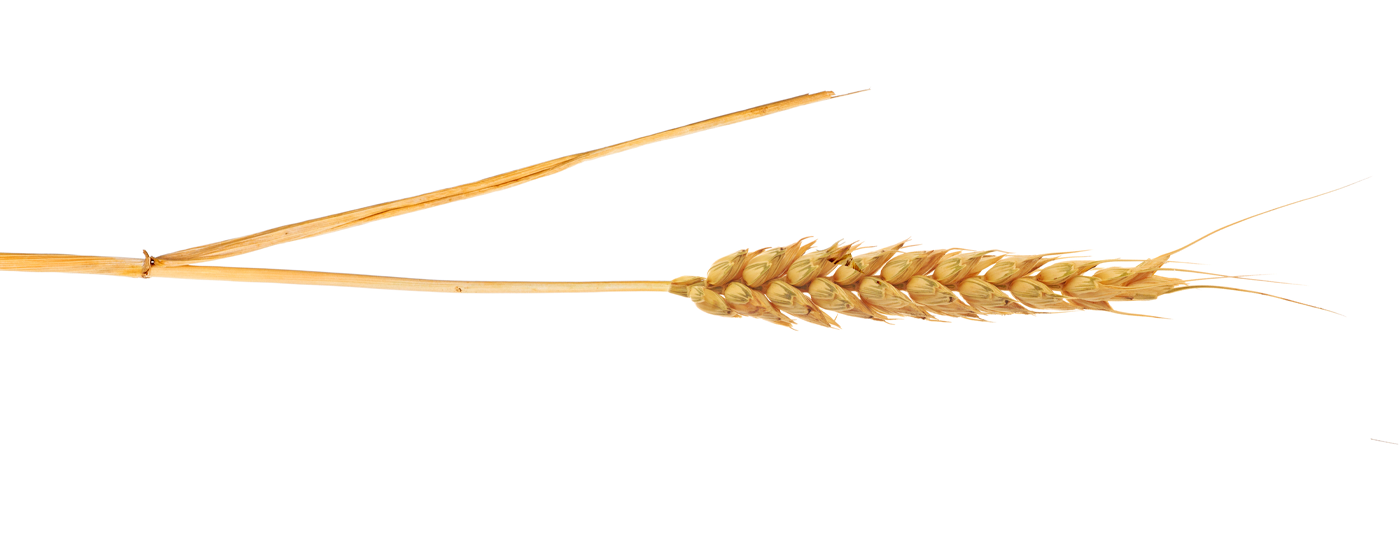Wheat
Wheat was one of the very first crops domesticated by human beings in the Neolithic Age and remains a cornerstone of the Western diet. Originally from the Near East, wheat is a cereal in the Gramineae family, characterised by stiff, hollow stalks, enveloping leaves and ears. There are two main types of wheat. Hard wheat is high in protein and used to make pasta, whereas soft wheat is used to make bread.
One of the first plants to be cultivated by human beings
Originally from the Near East, wheat was one of the very first crops domesticated by human beings in the Neolithic Age. Nowadays, it is a key component in the Western and Middle Eastern diet. Along with rice, it is the main cereal eaten in the world. Wheat varieties have evolved over time, as a result of natural conditions and hazards (climate, soil, diseases, pests), production techniques (tillering, early growth, resistance to disease and herbicide, height of stalks, resistance to lodging, drought and frost, yield) and human selection procedures (taste, nutritional content, milling quality).
Cultivation
Wheat takes around ten months to grow, from sowing to harvest. Nowadays, the grains are sown by machines, which means the density and depth of seeding can be adjusted. The cereal is harvested when the plant turns yellow and dries out. The ears of wheat are then beaten or threshed in order to separate the grains from the ears and stalks, which are used as straw. Next they are cleaned and sent to the flour mills, or in bygone days, to the watermills and windmills, to be turned into flour or semolina.
Characteristics and varieties
Wheat is a cereal in the Gramineae or Poaceae family. The plant grows between 60 cm and 1.2 m tall and develops ears with groups of flowers, each having three to five flowers. After pollination, the mature flower remains closed, producing the wheat grain as fruit. The wheat grain is oval-shaped, more or less rounded and has a small brush on the upper and lower end. Grains of wheat vary in size, shape and colour, depending on the variety. They can be white, red, yellow or purple.
A grain of wheat is not homogeneous. It comprises several layers of different tissues in three main parts: the germ, the endosperm and the husk.
1. The germ is the most important part of the grain as it enables the plant to reproduce. The germ is usually removed when the grains are cleaned in flour mills, as it has a high fat content which might turn flour rancid. Wheat germ is also high in mineral salts, vitamins, protein and oil and is often sold in health food shops.
2. The endosperm is the second main part of the grain. It contains around 65 to 70% of starch as well as a protein substance (gluten) which is distributed in particles amongst the starch granules. Around 12 to 14% of the endosperm is made up of gluten, which helps to bind flour and water together when making bread dough.
3. The husk protects the grain from external hazards. It is milled separately and sold as wheat bran.
There are two main types of wheat: hard wheat suitable for hot, dry climates, and soft wheat which is grown in cool, humid regions. Hard wheat provides semolina for pasta and couscous, while soft wheat is used to make bread. Winter wheat is a variety of soft wheat which is sown in autumn to take advantage of the winter moisture, whereas late-growing summer wheat is sown after winter in regions with a harsher climate. In Europe, the French term froment refers to both varieties of wheat as well as to spelt.
Nutrition
Like other cereals, wheat is a major source of carbohydrates (which provide energy), mainly from starch, a complex sugar. Starch takes longer to digest and enters the bloodstream slowly. It does not induce sudden spikes of insulin as refined sugar does, which, if consumed in excess, poses a certain health risk (diabetes, cardiovascular problems).
D’AMICO, Serge, 1999. Les céréales. In : Le guide des aliments. Montréal : Québec Amérique.
D’AMICO, Serge, 1996. Blé. In : L’encyclopédie des aliments. Paris : La Fontaine.
DRAPON, Roger, 1999. Notre pain quotidien. Paris : AGP.
DUPAIGNE, Bernard, 1979. Le pain. Paris : La Courtille.
MINISTÈRE DE L’AGRICULTURE, DE L’ALIMENTATION ET DES AFFAIRES RURALES. Identification des graminées de pâturage, Ministère de l’agriculture, de l’alimentation et des affaires rurales, Ontario [en ligne]. [Consulté le 07 septembre 2015] Disponible à l’adresse : http://www.omafra.gov.on.ca
SUISSE PAIN. Culture des céréales [en ligne]. [Consulté le 04 septembre 2015]. Disponible à l’adresse : http://www.schweizerbrot.ch
SUISSE PAIN. Sélection et recherche, [en ligne]. [Consulté le 04 septembre 2015]. Disponible à l’adresse : http://www.schweizerbrot.ch
SCHILPEROORD, Peer, 2013. Plantes cultivées en Suisse. Le blé. Alvaneu : Verein für alpine Kulturplanzen.




